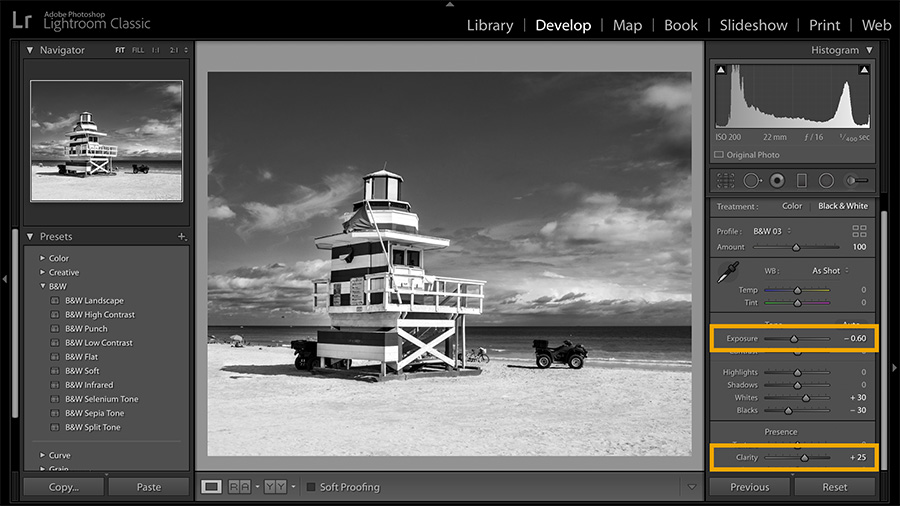
It’s totally up to you if you want to rename your files or keep the original name. I leave it to the default “Ask what to do” to avoid unwanted overrides.įile naming. You have several options, as you can see from the menu. Lightroom makes you choose what you want to do if a file already exists. Then right-click on your mouse or trackpad and select Export > Export…Įxport Location. In what destination in your computer or external hard drive you want to export your work.
LIGHTROOM PHOTO EDITING WITH DARK PANELING HOW TO
To really learn how to edit photos in Lightroom you have to learn how to “Export”.Ĭlick and select the photo you wish to export (Lightroom can export multiple images at the same time).

You’ve organized and edited your images, you’ve created reusable presets. How to Edit in Lightroom: Export Your WorkĮxporting your edited photos is one of the most crucial steps of post-processing. If you look at the images below, you’ll understand what the split-tone panel does to a photo.Īlright, now let’s see the before and after of the image. I use this panel as it gives a way to add two different colors to the highlights and shadows. Of all the options you already have to change color, adjust brightness and contrast of an image, you could think that it’s already enough. It can seem as the split toning panel is not the most used one. Here are my HSL settings after I’ve edited my photo. Usually, if I desaturate a color, I try to balance and see how it looks by adding more luminance. Luminance. Luminance is the reflective brightness of a color. Saturation. Intuitively by dragging left or right a slider in the Saturation section, you will make that color more or less intense. If you look at the grass, you will say that it’s green, but what shade of green? Is it green or there’s some yellow as well? These variations of color are what we can describe as hue. Hue is the gradient of color in your image. You can brighten or saturate specific colors while leaving others untouched. This powerful panel allows you to control different colors of your image independently. All I did to then mute the tones is drag the farthest left-hand point (Shadows) up, and the farthest right-hand side point down (Highlights).Įxperiment with different images and find your style. It’s is a common way to make your image pop more. One thing you will notice is that we obtained a slight “S” curve. You can repeat the same action for the Highlights and Shadows until you obtain the desired result. You will see your image getting brighter as you drag the curve. If for example, you want to make the image brighter, click on the midtone area and drag the curve up. The Midtones are split in Dark Midtones and Light Midtones.īy moving the curve down, the tones of your photo get darker, moving it up they get brighter.Īs you will see, it’s pretty intuitive to start editing photos and making changes using the tone curve. Going from left to right, you have Shadows, Midtones, Highlights. The Y-axis represents the lightness of a given tone. The X-axis of the curve is the tone axis.

The Tone Curve represents all the tones of your photo. This is a fantastic tool that you need to master if you want to learn how to edit photos in Lightroom.
LIGHTROOM PHOTO EDITING WITH DARK PANELING FREE
The Path to Photography Expert Get the FREE Course › Tone Curve Again, I tend to shift it to the left just a little bit to desaturate the image. If pushed too much, it will end up adding a color cast to the picture.

The difference is that with the Saturation slider, all the colors in the image are changed, not only the dominant colors. Similarly to Vibrance, Saturation affects the intensity of colors. With the vibrance slider, I almost always make colors less intense by shifting it to the left. Smartphone screens tend to make colors look much brighter than they are. Many of my images end up on social media. With the Dehaze slider as the name says you can reduce this effect and add detail in your image. Fog or pollution, for example, can affect the look of a landscape photo. It’s a handy slider since several factors could cause atmospheric haze. The Dehaze slider is a new arrival in the Presence section. Bringing the slider to the right will make the forms more defined.ĭehaze. In our case, we want well-defined shapes as you usually would for a landscape photo. Bringing down clarity will make the image less defined with an almost out-of-focus effect.

Clarity affects the transition between dark a light areas.


 0 kommentar(er)
0 kommentar(er)
